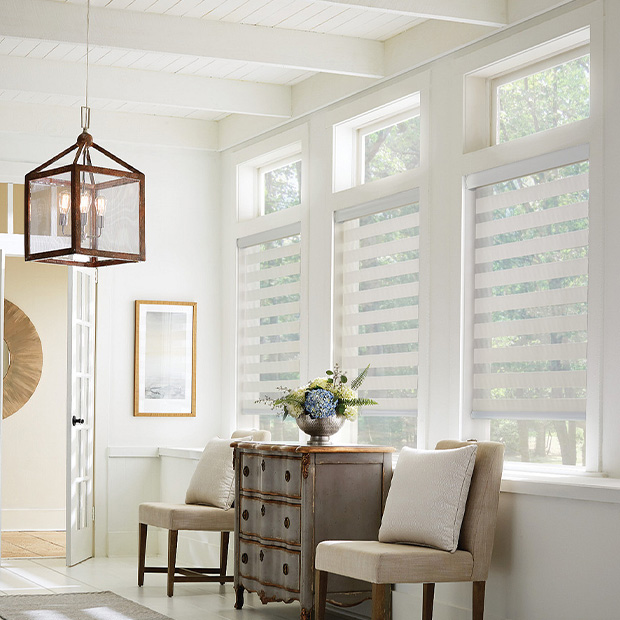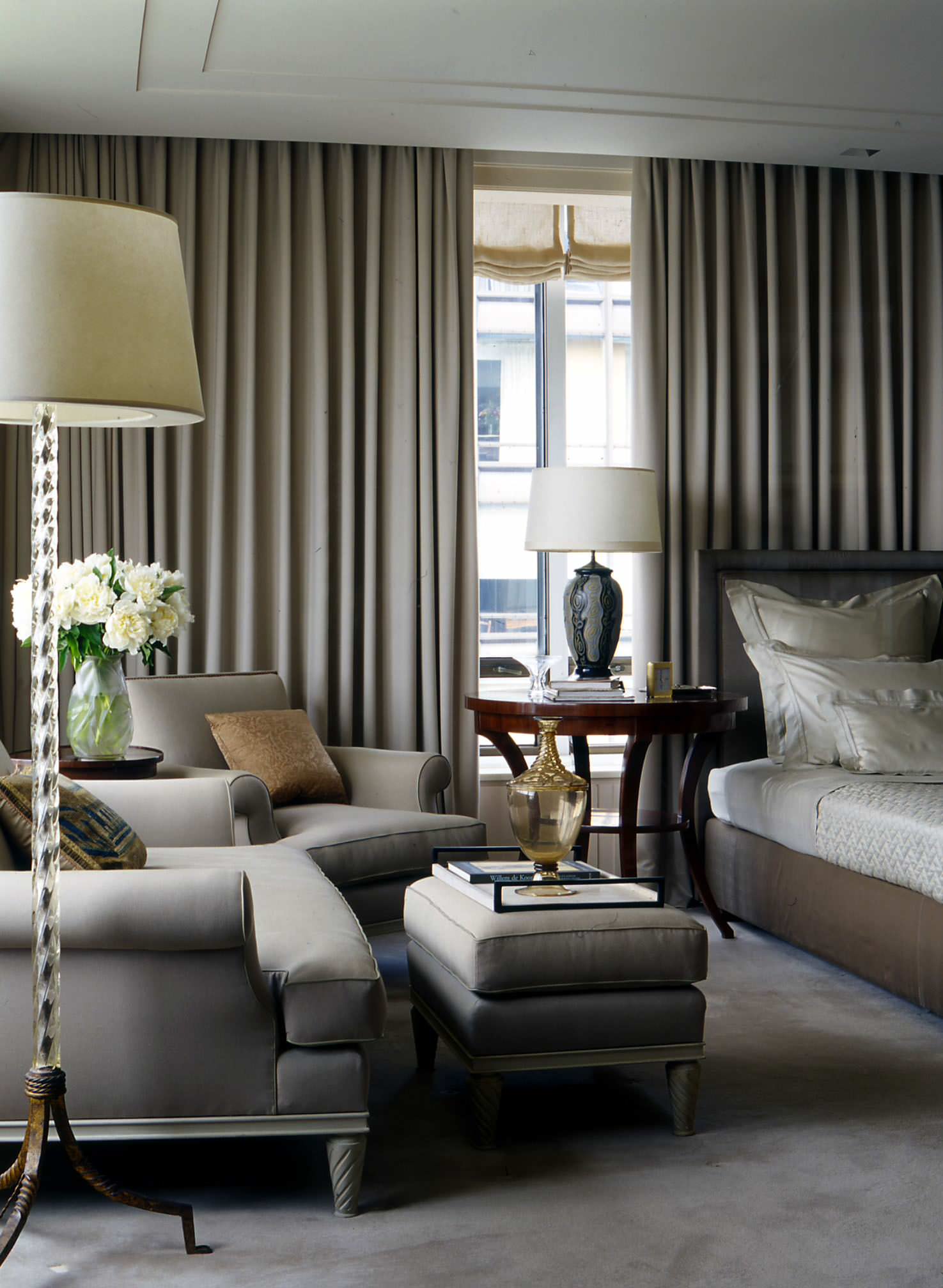Experience modern design with Phoenix motorized blinds and effortless operation
The Ultimate Overview to Blinds: Types, Benefits, and Picking the Right Suitable For You
The world of home window treatments is large and differed. Blinds can be found in numerous designs, each offering distinctive benefits for various setups. Understanding these alternatives is crucial for making informed choices. In addition, variables like material option and area functionality play a significant duty. As one thinks about the perfect equilibrium between appearances and functionality, the nuances of measuring and maintaining blinds additionally emerge as vital aspects. What should one focus on when selecting the suitable window option?
Types of Blinds: An Extensive Overview
Blinds function as both practical and aesthetic elements in indoor design, supplying various choices to match diverse preferences and demands. Amongst the most popular types are Venetian blinds, defined by straight slats that can be adjusted for light control and personal privacy. Roller blinds, recognized for their simplicity and versatility, can be found in a series of patterns and products, making them ideal for typical and modern-day setups. Vertical blinds, usually made use of for bigger windows or sliding doors, permit simple modification and are frequently made from fabric or vinyl.
Roman blinds, with their classy folds up, include a touch of sophistication to any type of space, while mobile tones offer insulation and energy effectiveness. Additionally, bamboo blinds offer a natural, green alternative, instilling areas with warmth. Each type has one-of-a-kind attributes and designs, ensuring homeowners can find the perfect fit for their certain design and functional requirements.
Advantages of Putting Up Blinds in Your Home
The setup of blinds in a home supplies numerous considerable advantages. They provide boosted personal privacy control, enabling homeowners to manage exposure from the outside. Additionally, blinds add to energy performance by aiding to handle indoor temperature levels, reducing the reliance on heating and cooling systems.
Enhanced Personal Privacy Control
When home owners seek to enhance their living spaces, setting up blinds supplies a substantial advantage secretive control. Blinds offer a versatile service for controling presence from both the exterior and interior of the home. By readjusting the slats or raising the blinds, people can conveniently take care of the amount of light getting in while at the same time blocking the sight from outside. This flexibility enables homeowners to create a comfy environment without giving up all-natural light. Furthermore, various styles and products are readily available, ensuring that homeowners can pick options that seamlessly blend with their decoration while boosting personal privacy. Inevitably, the installation of blinds works as an efficient ways to secure personal room, encouraging relaxation and tranquility of mind within the home environment.
Energy Performance Enhancement
Installing blinds not only improves privacy but likewise substantially contributes to energy effectiveness in the home. By managing all-natural light and decreasing warm transfer, blinds can help maintain a consistent indoor temperature level. Throughout warmer months, shutting blinds can shut out excessive sunlight, thereby reducing the reliance on a/c. Alternatively, in cooler months, they can provide insulation by trapping heat, lowering home heating expenses. Furthermore, energy-efficient blinds, such as mobile shades, are created specifically to reduce energy loss. By investing in high quality blinds, property owners can produce an extra comfortable living setting while additionally decreasing energy bills. Eventually, the installment of blinds works as a sensible remedy for those looking for to enhance both comfort and power efficiency in their homes.
Just how to Pick the Right Blinds for each and every Area
How can one figure out the most appropriate blinds for each room in a home? The selection process starts with assessing the area's purpose and atmosphere. As an example, in living areas, functional blinds that permit light control while guaranteeing personal privacy are excellent. In rooms, power outage blinds can enhance rest quality by shutting out outside light.
Bathrooms and cooking areas need moisture-resistant choices to hold up against humidity, making plastic or faux wood blinds appropriate options. Additionally, the desired visual plays a vital role; coordinating blinds with the area's design enhances the overall ambiance.
Think about the amount of all-natural light each area receives; lighter blinds may be more suitable for dark areas, while darker options can include warmth to sunlit areas. Eventually, recognizing details demands and preferences for functionality and style will assist home owners in making notified choices customized per space's one-of-a-kind demands.
Material Options: Wood, Vinyl, Material, and Much more

Wood Blinds Benefits
Timber blinds are a preferred option among home owners looking for a blend of aesthetic appeals and capability. One substantial benefit of wood blinds is their natural beauty, using a cozy and inviting look that improves any kind of indoor design. They are available in numerous surfaces and shades, allowing for customization to match individual style. Furthermore, timber blinds provide excellent light control and privacy, as their slats can be quickly gotten used to filter sunshine while keeping seclusion. Their sturdiness is an additional benefit; with appropriate treatment, wood blinds can last for years without losing their appeal (Phoenix custom blinds). They have insulating properties, assisting to regulate indoor temperatures and possibly reducing energy expenses. On the whole, timber blinds combine style and usefulness, making them a suitable choice for lots of families
Vinyl Resilience Includes
Plastic blinds stand apart for their phenomenal toughness, making them a functional selection for numerous atmospheres. These blinds are immune to moisture, making them suitable for locations such as shower rooms and kitchens where humidity can be an issue. Unlike wood, vinyl does not warp, split, or discolor under sunlight, making sure durable efficiency and minimal maintenance. Additionally, they are readily available in a variety of shades and styles, enabling homeowners to tailor their appearance without compromising longevity. Vinyl blinds are additionally very easy to tidy; an easy clean with a damp fabric is commonly enough to maintain them looking fresh. Generally, their strength and reduced upkeep make vinyl a favored choice among property owners looking for both performance and visual charm.

Material Options Introduction
Blinds can be found in a variety of fabric alternatives that satisfy various visual and useful needs. Usual products include vinyl, material, and wood, each offering distinct benefits. Wood blinds offer a classic, warm visual and exceptional insulation however need upkeep to avoid bending. Vinyl blinds are sturdy and moisture-resistant, making them perfect for high-humidity locations like bathrooms and cooking areas. Textile blinds, offered in various shades and patterns, use convenience and gentleness, enhancing home style while supplying varying degrees of light purification. Furthermore, options like fake timber provide the appearance of natural timber with included durability. When choosing blinds, it is vital to assess the details needs of each space to assure peak performance and design.
Gauging and Setting Up Blinds: Tips for Success
Although determining and setting up blinds might appear straightforward, careful interest to information is very important for attaining a best fit. First, it is essential to gauge the window framework accurately, keeping in mind both the width and elevation. For inside installs, deduct a tiny amount from the size to assure a tidy fit, while outside mounts must expand beyond the frame for better light control and aesthetics. Making use of a steel tape procedure is suggested for precision.
When mounting, collect all required tools, such as a degree, drill, and screws. Following the producer's guidelines is crucial to guarantee correct installation. It is advisable to pre-drill holes to stop damaging the braces. In addition, having a second individual can make the process smoother, specifically when raising heavier blinds. Finally, after installation, test the blinds to confirm they operate smoothly and adjust as needed for optimum performance.
Maintenance and Treatment for Long-Lasting Blinds
Proper maintenance and care can significantly expand the lifespan of window treatments. Normal cleaning is important; utilizing a soft cloth or a microfiber duster can effectively remove dirt without damaging surface areas. For deeper cleaning, a mild remedy of soap and water is advised, used with a soft sponge, ensuring that no moisture permeates right into the mechanisms.
For material blinds, area cleansing is advisable, while wooden blinds ought to be treated with a wood-safe cleaner to maintain their coating. Prevent subjecting callous excessive wetness, warmth, or straight sunlight, which can lead to bending or fading.
Furthermore, periodic inspection of cords and systems can stop deterioration. It's smart to adhere to producer standards for particular materials, as various blinds may have special care needs. By adopting these basic maintenance practices, home owners can guarantee their blinds continue to be functional and aesthetically pleasing for several years to come.
Regularly Asked Inquiries
Can Blinds Help Reduce Energy Costs in My Home?
Blinds can efficiently decrease energy expenses in a home by giving insulation, blocking warmth throughout summertime, and retaining warmth in wintertime. Their capacity to manage light and air circulation enhances energy effectiveness throughout the year.
Are There Child-Safe Options for Blinds?
Yes, there are child-safe choices for blinds. These consist of cordless styles, retracting cables, and safety tools that get rid of dangling cables, making sure a safe environment for kids while preserving performance and aesthetic appeal in homes.

How Do Blinds Compare to Drapes or Tones?
Blinds commonly provide more accurate light control and area efficiency than tones or curtains. Phoenix drapes. They are frequently much easier to clean up and maintain, while curtains provide a softer aesthetic, and tones can offer differing insulation benefits
Can I Customize the Shade and Style of My Blinds?
Yes, blinds can be customized in both design and color. Different makers offer a vast array of alternatives, allowing consumers to choose materials, patterns, and hues that fit their personal aesthetic and home design.
What Is the Average Life-span of Different Kinds of Blinds?
The ordinary lifespan of blinds differs: wood blinds last 5-10 years, fake timber 7-10 years, aluminum 5-10 years, and material shades around 5 years, relying on use, upkeep, and exposure to sunlight.
Washrooms and cooking areas call for moisture-resistant options to endure moisture, making plastic or fake timber blinds suitable choices. Timber blinds offer all-natural beauty and heat, while plastic gives sturdiness and convenience of maintenance. One significant benefit of timber blinds is their all-natural elegance, offering a warm and inviting appearance that enhances any kind of interior decoration. In addition, wood blinds offer superb light control and privacy, as their slats can be easily readjusted to filter sunshine while keeping privacy. For textile blinds, spot cleansing is recommended, while wood blinds ought to be treated with a wood-safe cleaner to preserve their coating.